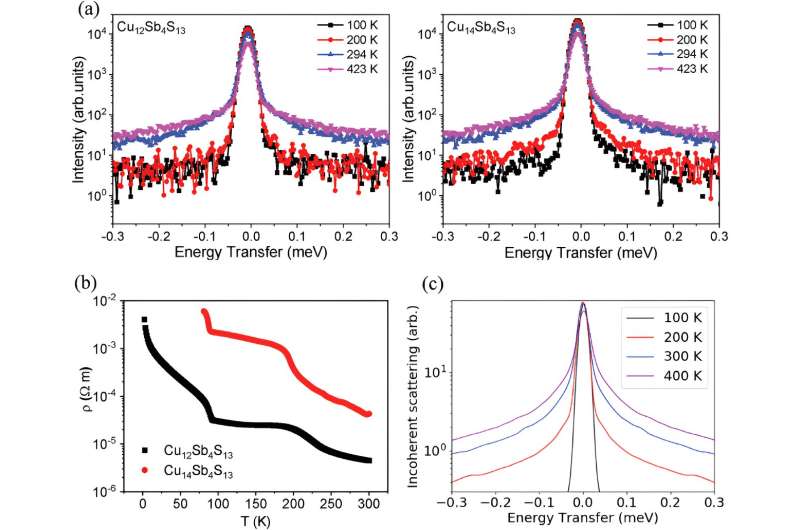This article has been reviewed according to Science X's editorial process and policies. Editors have highlighted the following attributes while ensuring the content's credibility:
fact-checked
peer-reviewed publication
trusted source
proofread
New material could allow devices to turn wasted heat into useful electricity more efficiently

Scientists have discovered a way to design materials that improve energy efficiency, in a breakthrough that could help the fight against climate change, make manufacturing greener, and could even take the hassle out of charging your smart watch.
The thermoelectric energy harvesting innovation identifies a new way of harnessing previously untapped sources of waste heat and converting it into electricity.
Thermoelectric materials can turn temperature differences into electricity. Researchers at Reading have discovered that if a thermoelectric material has moving ions inside cages, the heat flow will be reduced. This keeps the hot and cold sides at different temperatures, while electrons can flow from the hot to the cold side, so electricity can be made.
Usually, materials with moving ions break down when making electricity like this. But the material described in the new study published in Advanced Materials doesn't break down easily and could allow devices and generators to turn wasted heat into useful electricity more efficiently than in current designs.
Dr. Paz Vaqueiro, of the University of Reading's Department of Chemistry, led the study. She said, "This discovery has the potential to help address the global energy crisis and contribute to combating climate change. Approximately two-thirds of the energy generated worldwide is wasted in the form of heat. Converting even a fraction of this waste heat back into useful electricity would help to ensure a sustainable energy supply and reduce carbon emissions.
"The U.K. is predicted to need twice as much electricity in 2050 as it did in 2020. The potential of thermoelectric technology has been known about for a number of years, but currently generators are expensive and not very efficient. Using new thermoelectric technology that is cheaper to run and more efficient could help turn the 48 TWh of waste heat the U.K. produces every year into electricity and could help us on the path to reach net zero."
Watches and cars
Not only could the breakthrough have positive consequences for the fight against climate change, but it could also make a difference to some of the devices and machinery we use daily.
At present, thermoelectric devices and generators are expensive and only used in niche applications (such as the Voyager probes sent by NASA to explore space beyond the solar system). However, the development of new thermoelectric generators could have a big impact on wearable devices, such as smart watches, where the current technology relies on batteries that require regular recharging. Eliminating this requirement, by harvesting body heat to generate power, could not only be more convenient but also make wearable tech more reliable in critical applications, such as monitoring the health of vulnerable or elderly patients.
The development could be of use for the motor industry, allowing carmakers to develop thermoelectric generators that use waste heat to charge batteries of plug-in electric or hybrid vehicles, increasing their efficiency. Factories producing glass, steel or cement, which are currently carbon-intensive and generate large amounts of waste heat, could also benefit from the technology.
More information: Shriparna Mukherjee et al, Beyond Rattling: Tetrahedrites as Incipient Ionic Conductors, Advanced Materials (2023). DOI: 10.1002/adma.202306088


















